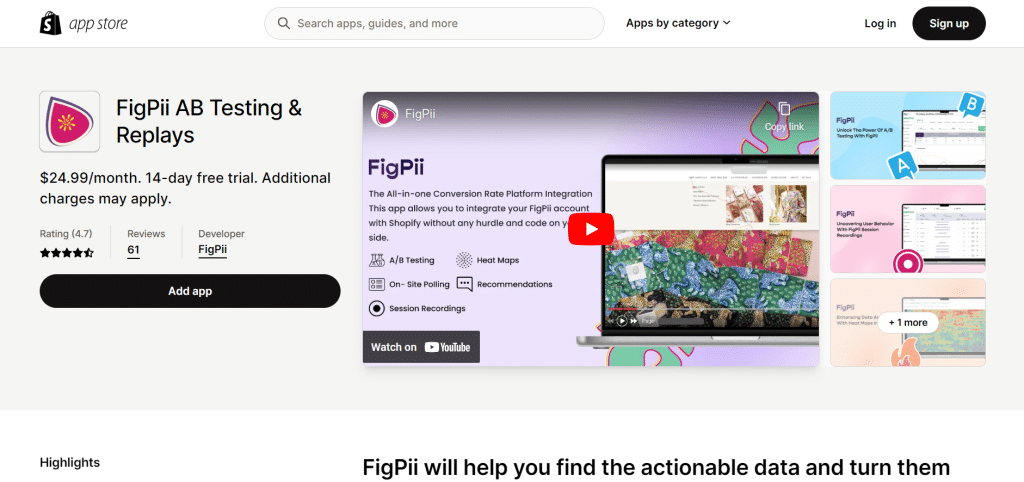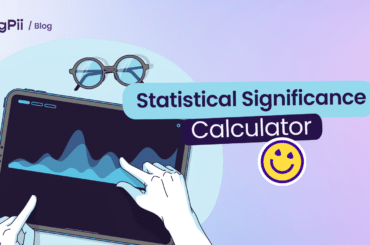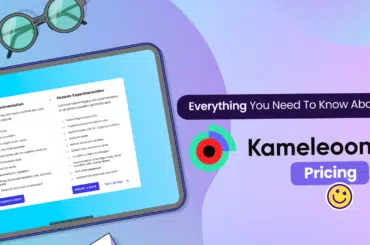Do you know which CTA on your Shopify Store visitors click on the most?
Or, what kind of headline your visitor will be attracted to?
Or, do you know if your product page answers all of your visitors’ questions?
Does your landing page make visitors want to explore the other pages on your site?
I think the biggest and most important question here is:
Is your website enough, when it comes to design and layout, content, navigation, etc, to uplift its conversion rates?
Well, all of these questions can be answered by AB testing!
A/B testing, also known as split testing, is one of the tools that can help you with conversion rate optimization.
So, if you have a Shopify store and need to do some AB testing, this blog will help you.
FigPii, as a testing tool, can help you do all the testing that you need.
Let’s delve in…
What is A/B Testing?
A/B Testing, also known as split testing, is the process of creating two variations of a website, app, or marketing campaign and showing it to website visitors to see which performs better at achieving a particular goal.
So, imagine you have a website or app you’re trying to improve. Maybe you want people to click a certain button more often, or you want them to stay on your site longer. A/B testing is a way to determine what changes you can make to get the desired results.
Here’s how it works: You create two versions of the thing you’re trying to improve – let’s say it’s a button. One version is the original (let’s call it Version A), and the other is a slightly different version (let’s call it Version B). The only difference between the two versions is the thing you’re trying to improve – in this case, the button.
Then, you randomly show half your visitors Version A and the other half Version B. You track how many people click on each version of the button, and after a while, you compare the results to see which performed better.
The great thing about A/B testing is that it takes the guesswork out of making changes to your website or app. Instead of just hoping that a change will improve things, you can test it out and see the results yourself.
Things To Know Before Running A/B Test On Shopify
Before going ahead and setting up FigPii to run an A/B test on your Shopify Store, here are some of the important things to keep in mind.
-
-
Identify your A/B Testing goals.
While FigPii may prompt you to choose your goals, it’s important to understand why you conduct an A/B test. Clearly identify your objectives beforehand to measure the success of your test accurately. Examples of goals could include increasing conversion rates, reducing bounce rates, or improving user engagement.
-
Focus on one variable.
Test only one variable at a time, such as a headline, button color, or product image, so that you can isolate the effect of each variable and accurately measure its impact on our store.
-
Ensure your sample size is sufficient:
Make sure your sample size (traffic allocated to your variations) is large enough to generate statistically significant results. This is important if you want to avoid errors while analyzing your a/b test results. A larger sample size helps reduce the impact of random variations in user behavior and provides more reliable and trustworthy results.
-
Test for a sufficient duration:
Since the traffic on your site will vary from time to time, ensure that you run your A/B test for a sufficient duration to account for any daily or weekly variations in traffic or sales. A duration of at least one week is generally recommended.
-
Be cautious of seasonal trends:
Be aware of any seasonal trends that may impact your results. For example, if you’re testing different versions of your online store during the holiday season, your results may be affected by increased traffic and sales.
-
How to Set Up FigPii on Your Shopify Site?
To A/B test your Shopify store using Figpii, you need to log in to your dashboard and install FigPii on your store.
Here is how to do it:
- Go to the apps part on Shopify
- Search for FigPii,
- Install it,
- Log in to FigPii, or sign up to it if you don’t have an account
- Then, FigPii integration will be enabled.
From there, you can go directly to the dashboard.
Now, How Can You Launch a Test on FigPii?
Once you log in to FigPii’s dashboard, you will find the AB testing tool icon on your right; click on it.
Then, click on “create new experiment.”
- The first step will be to name your experiment,
- Then, you must choose the experiment you want to launch. Either “AB test” or a “split URL test.”
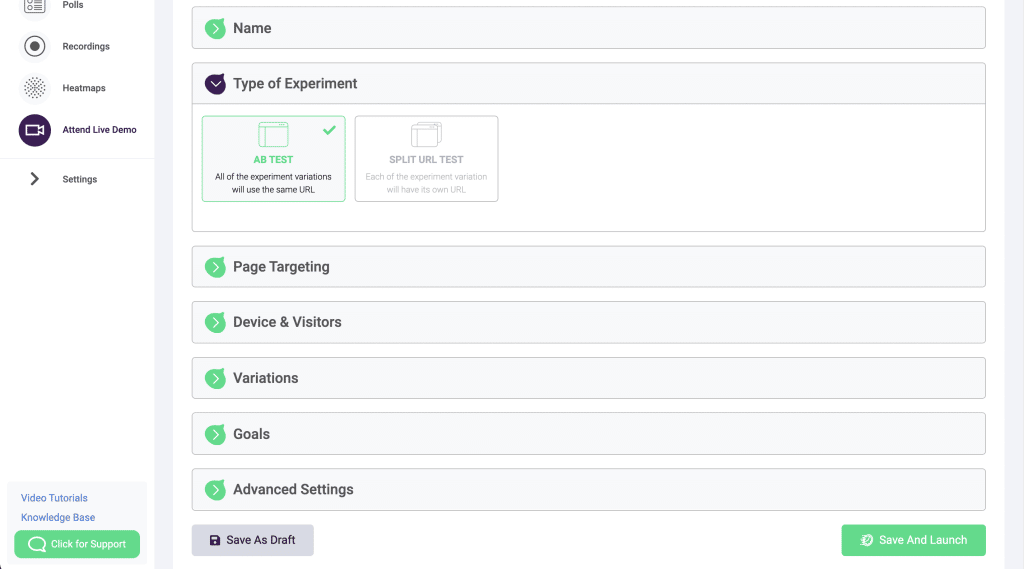
Split testing helps if you have a single page and you already have the new design implemented on Shopify itself; then this is a good option for you.
But, if you don’t have the new design implemented anywhere, running an AB test is better.
With split tests, we don’t handle the design of the new variation; those are handled internally on the website itself.
All we handle is splitting the traffic between the different variations
But with AB test, you can find all the tools in the next step “page targeting,” to edit the page.
- In page targeting, you can either run the experiment on a specific page, or on multiple pages.
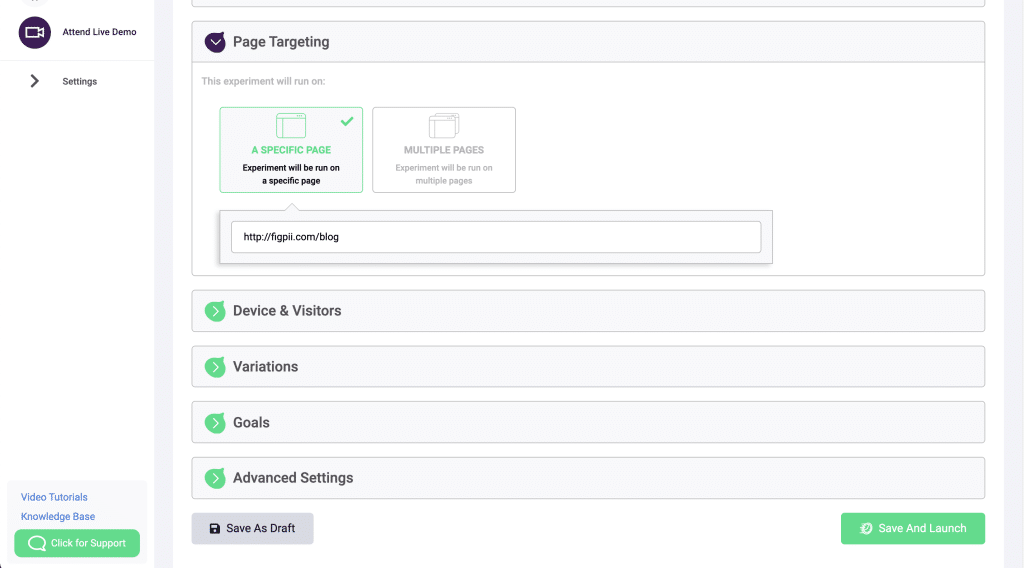
To understand how targeting works, check the knowledge base below:
How Do I Target Specific URLs When Running An AB Test?
- Next, you need to choose which device you want the test to be on; desktop, mobile, or both.
And, you need to choose the visitor type: new, returning, or all of them.
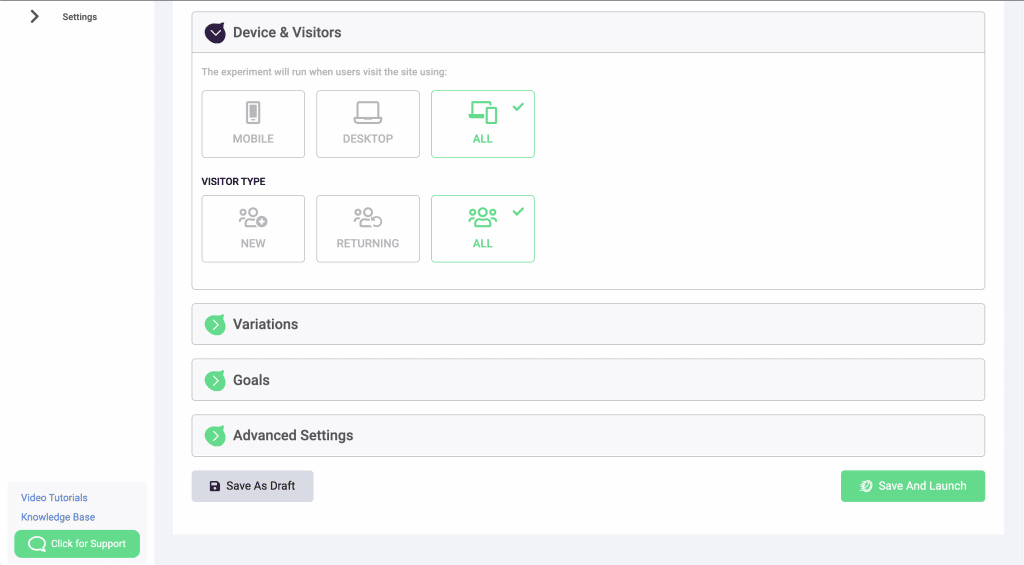
- Then, in this step, you need to add your variation.
Here, you can either use the built-in FigPii visual page editor to implement your changes and ideas on the website.
Or, if you don’t want to use the visual editor and have a developer in your team, you can use CSS and javascript.
- After you create your variations, you need to choose your goals.
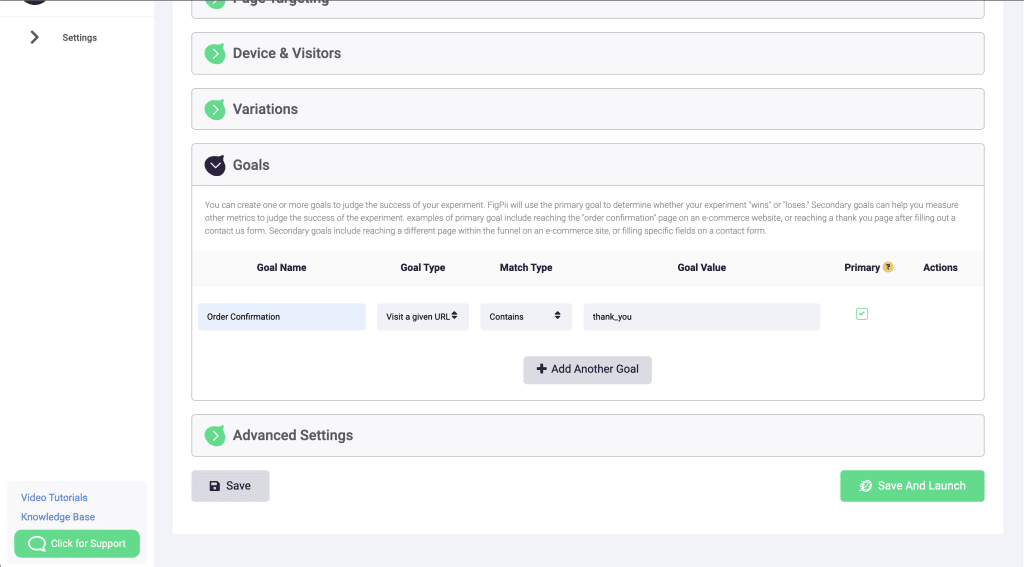
For the goals of the test, the main goal or the micro goal is “order confirmation.”
It represents how many products you sold. The test measures the impact the test has on your revenue. Also, it measures what percentage of visitors have converted on the website.
Also, you have additional goals or macro goals, which you might want to keep an eye on and see the test’s impact on them.
These goals can be product visits, collection visits, add-to-cart, cart visits, and checkout.
- The last step is to save and then launch your test.
FigPii offers a 14-Day free trial account where you can access unlimited A/B tests with unlimited users.
Examples of Elements You Can A/B Test
The amount of elements you can test on your website using the FigPii AB testing tool is enormous.
Navigation Bar on Landing Pages
For instance, for this ecommerce website that sells reading glasses online, they had a problem: the benefits banner appeared above the top navigation on their landing page.
Also, it wasn’t a sticky bar, which meant that it goes out of sight when visitors scroll.
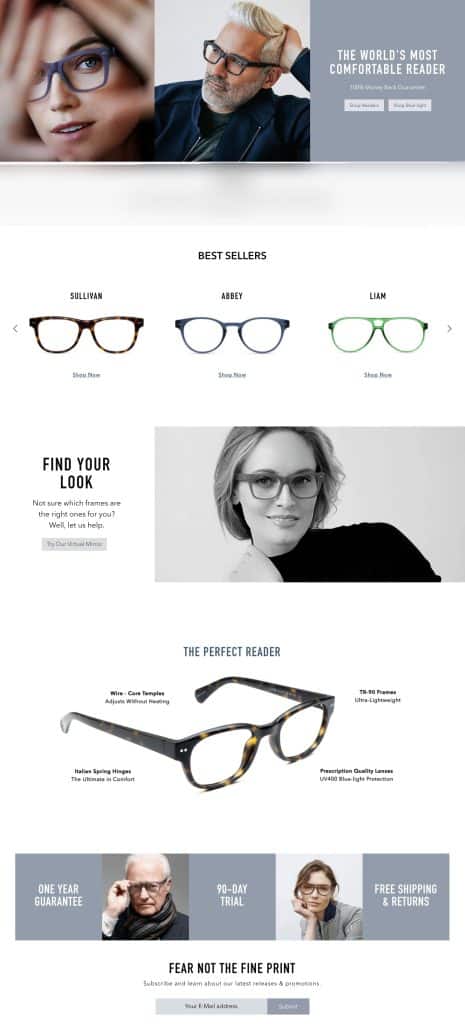
And, that is what we tested:
- We added three benefits on the banner,
- We placed the banner under the top navigation,
- We made the banner sticky,
- We made the banner transparent.
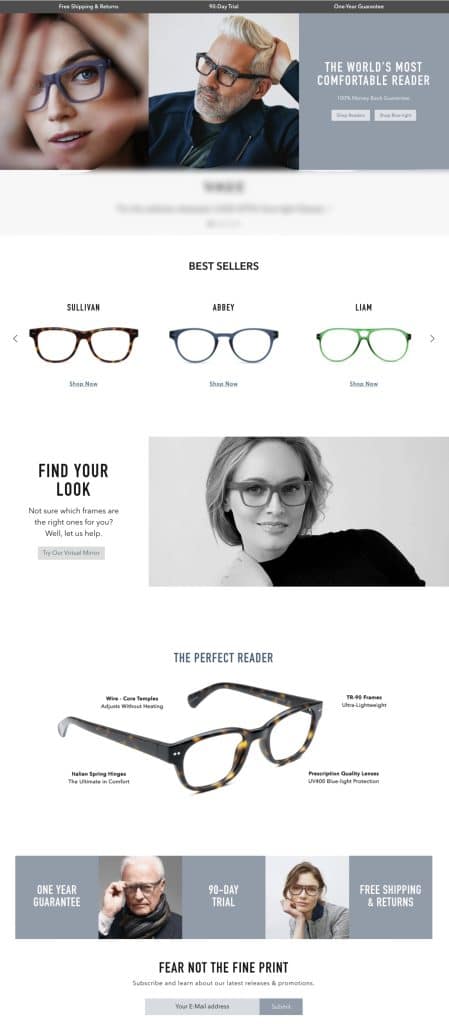
As a result, the conversion rate has been uplifted by 25.95%.
Product Pages
For another client, which sells adventure essentials, bags of good quality, we tested three different things.
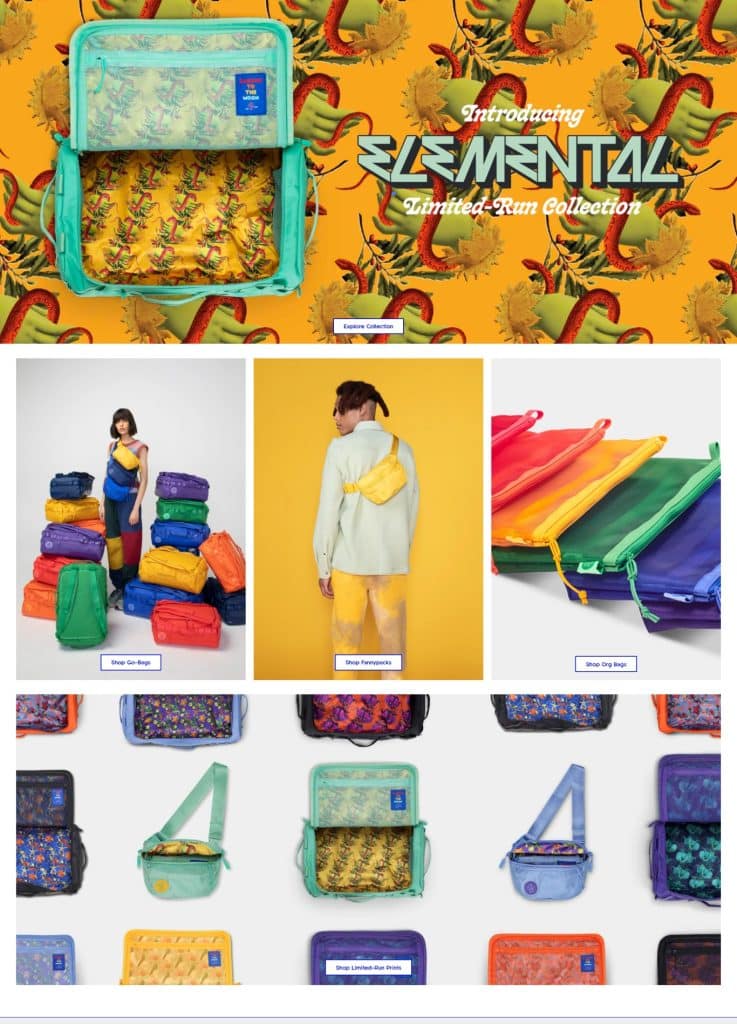
- Add the most popular product to the homepage, so when the customers visit the website, they don’t have to click on the category pages to see the products.
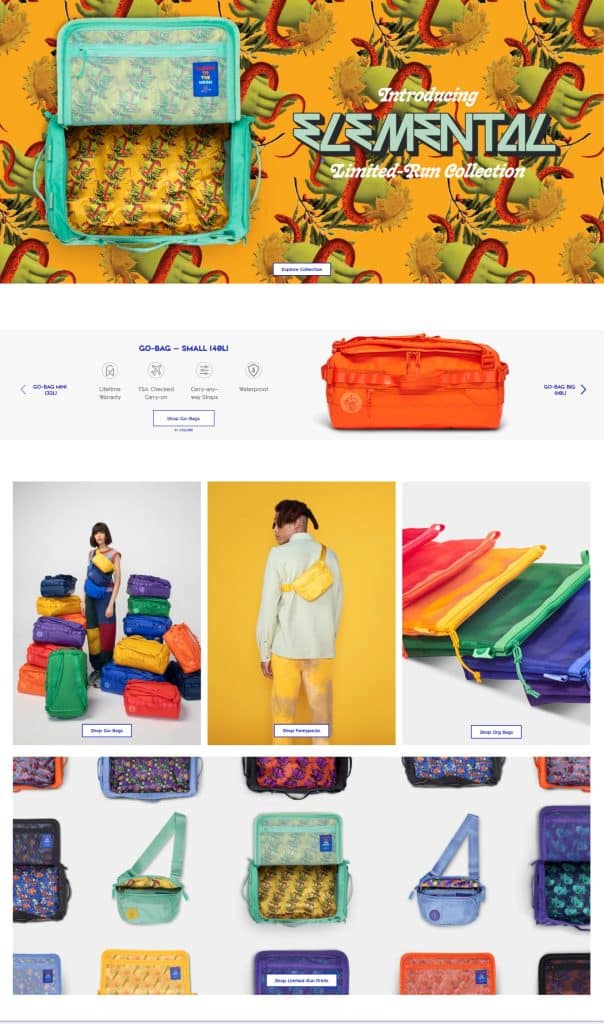
The test on desktop had a remarkable uplift in conversion rate, by 43.14%.
Customer Reviews
- The second thing we have tested, due to the lack of customer ratings on category pages, is adding the customer ratings for each product to improve the experience of category pages.

The test has resulted in a 28.13% uplift in conversion rate for desktop, and 2.11% for mobile.

- The last test solved an issue they were experiencing: customers have to click on ‘’Shop’’ to see the company’s products.
When they click on ‘’Shop’’ an additional menu appears where they can choose from different products.
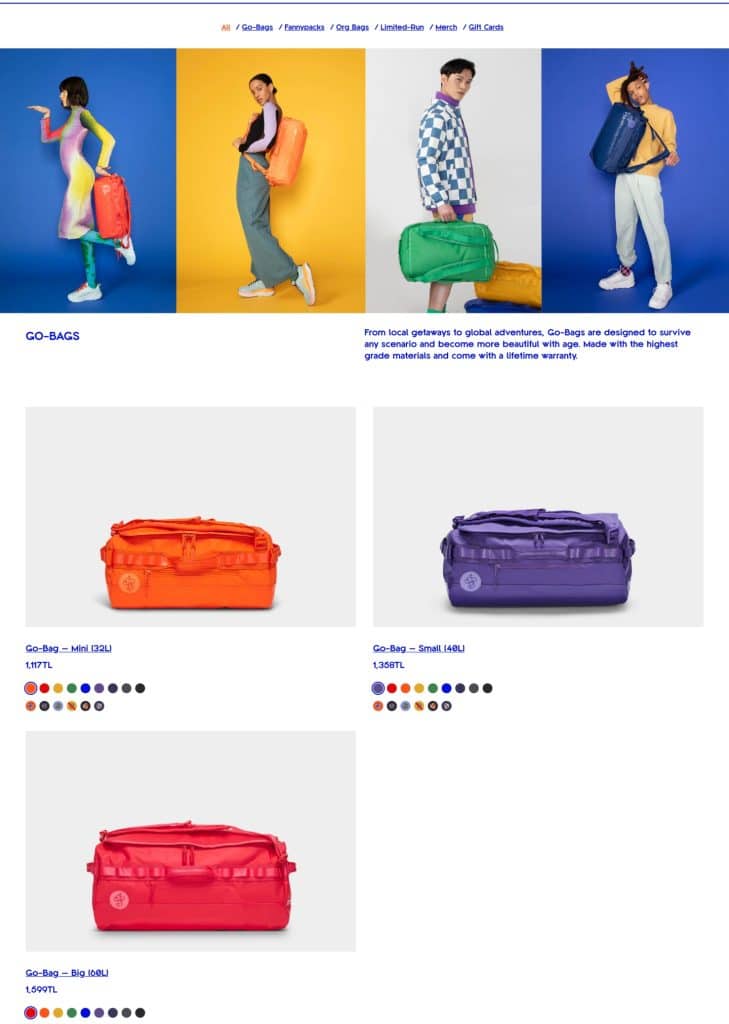
We wanted to shorten the time and clicks so that the customers can already see different products sorted on the top.
That’s why we tested replacing Shop / About by adding Shop All, Go-Bags, Fannypacks, and About.

This test resulted in an uplift of 2.92% for desktop.
How To Analyze Shopify A/B Test Results?
Now that you’ve finished running the A/B test on your store and found a winning variation, do you just go ahead and implement this variation?
Analyzing A/B Test results is important to ensure that your results are accurate and valid. In some cases, you can even have more than one winning variation, and what happens then?
Let’s discuss the possible scenarios that occur after running A/B tests and you’re about to analyze the test results.
- Control Wins: When the original web page or app design you were testing performs better than the variation you created, this shows that the other version(s) you created will not beat the original version in terms of whatever your A/B Testing goal is. This means that you can continue using your original design as it is.
- Variation Wins: If another variation you created outperforms your original web page in achieving your testing goals, this means that you can replace your original design with the winning variation.
In some cases where you have more than one variation created, say you have Variations B, C, and D. If Variant D wins after running your tests for the first time, you should rerun your test to validate the results. However, this time around, you should run the winning variation with only the control version. - Inconclusive Results: An inconclusive result can occur when you have multiple winners after running A/B tests or when the results are too close to declare a winner. In this case, it is advisable to review the changes you made in each variation and see if they can be combined into a single idea and implemented in just one variation.
Analyzing your A/B Test results can be very insightful, revealing other opportunities you have missed or overlooked while testing.
Importance of A/B Testing Your Shopify Store
As you’ll see in some of the case studies used in this article, A/B testing your online store is important because:
-
-
Optimizing conversions: As you can see in the first example above, changing the navigation bar to a sticky one and also changing its position on the page increased the conversion rate by 25.95%.
-
Reducing bounce rates: AB testing allows you to identify design elements that keep visitors on your store longer, reducing bounce rates and increasing the likelihood of a sale. To track metrics such as bounce rates or exit rates, you do not necessarily need an A/B testing tool. You can do that with Google Analytics.
-
Understanding customer preferences: AB testing your store eliminates the guesswork involved in trying to figure out what your customers want. This information can guide your decisions about future product development, marketing campaigns, and customer engagement.
-
Optimizing user experience: In the last example, where we replaced the “SHOP” button, we optimized the user experience and reduced buying friction. AB testing helps you identify and remove friction points in the buying process, resulting in a smoother and more efficient shopping experience for customers.
-
Wrapping Things Up
That’s everything you need to know about how to AB test on your Shopify store using FigPii. If you’ve also been using Google Optimize to run your tests, then you know it will be discontinued soon, come 30th September 2023. As a result, you will no longer be able to run experiments.
FigPii, among other tools, is an excellent alternative, and we’re currently providing a free migration service for all users affected by the Google Optimize Sunset.
However, if you own a WooCommerce store, the next blog will definitely benefit you.
It will be published next week.
Until next week!


